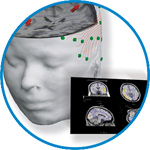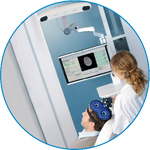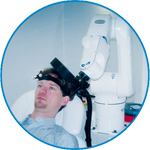- Home
- About ANT
-
Products

asa
asa is a highly flexible EEG/ERP and MEG analysis package with a variety of source reconstruction, signal analysis and MRI processing features.
.jpg)
eego mylab
The new frontier in multimodal brain research. With up to 16 kHz sampling rate, 256 EEG channels and unique software features, eego mylab gives you an unprecedented in-depth understanding of the human brain.

eego sports
eego sports offers complete freedom to collect high-density EEG data, bipolar EMG signals, and a variety of physiological sensor data, wherever and whenever required, with publish quality data in less than 15 minutes!

waveguard net
The waveguard net sets a new standard for research applications requiring high-density EEG data acquisition with quick preparation time, high flexibility, and subject comfort.

visor2
Our new and upgraded visor2 solutions integrate all the latest technologies for navigated rTMS, dual-coil navigation support, EEG-TMS recordings and pre-surgical evaluation for the highest quality in research and clinical procedures.

powerMAG ANT
The PowerMAG ANT 100 rTMS stimulator is designed for the specific needs of high-end TMS applications. Powerful high-frequency TMS as well as high precise single pulse and repetitive pulse protocols are combined in one single device.

xensor
xensor offers the solution for digitization of 3D electrode positions. xensor takes care of the whole procedure; it records, visualizes and stores positions acquired with a dedicated digitizer.

waveguard original
waveguard original is the cap solution for EEG measurements compatible with fMRI, MEG and TMS system. Use of active shielding guarantees performance in even the most demanding environments.

waveguard connect
waveguard connect EEG caps are a perfect match for hospitals and institutes aiming at reliable EEG, maximum uptime and great patient comfort! For optimal signal quality, the electrodes are made of pure, solid tin.

waveguard touch
waveguard touch is a dry electrode EEG cap. The unique Ag/AgCl coated soft polymer electrodes provide stable, research-grade EEG signals while maintaining subject comfort. The combination of these innovative dry electrodes and the industry-leading waveguard cap makes waveguard touch the best solution for dry EEG.

smartmove
smartmove allows planning of a complete TMS session ahead by defining stimulation sites based on anatomical MRI information and functional information like fMRI, PET or EEG/MEG.
Stay - References
- Support
- Events
- News
- Contact Us
You are here
Sex differences in the brain response to affective scenes with or without humans
Sex differences in the brain response to affective scenes with or without humans
Recent findings have demonstrated that women might be more reactive than men to viewing painful stimuli (vicarious response to pain), and therefore more empathic [Han, S., Fan, Y., & Mao, L. (2008). Gender difference in empathy for pain: An electrophysiological investigation. Brain Research, 1196, 85–93]. We investigated whether the two sexes differed in their cerebral responses to affective pictures portraying humans in different positive or negative contexts compared to natural or urban scenarios. 440 IAPS slides were presented to 24 Italian students (12 women and 12 men). Half the pictures displayed humans while the remaining scenes lacked visible persons. ERPs were recorded from 128 electrodes and swLORETA (standardized weighted Low-Resolution Electromagnetic Tomography) source reconstruction was performed. Occipital P115 was greater in response to persons than to scenes and was affected by the emotional valence of the human pictures. This suggests that processing of biologically relevant stimuli is prioritized. Orbitofrontal N2 was greater in response to positive than negative human pictures in women but not in men, and not to scenes. A late positivity (LP) to suffering humans far exceeded the response to negative scenes in women but not in men. In both sexes, the contrast suffering-minus-happy humans revealed a difference in the activation of the occipito/temporal, right occipital (BA19), bilateral parahippocampal, left dorsal prefrontal cortex (DPFC) and left amygdala. However, increased right amygdala and right frontal area activities were observed only in women. The humans-minus-scenes contrast revealed a difference in the activation of the middle occipital gyrus (MOG) in men, and of the left inferior parietal (BA40), left superior temporal gyrus (STG, BA38) and right cingulate (BA31) in women (270–290 ms). These data indicate a sex-related difference in the brainresponse to humans, possibly supporting human empathy.

 Read more
Read more.jpg)




